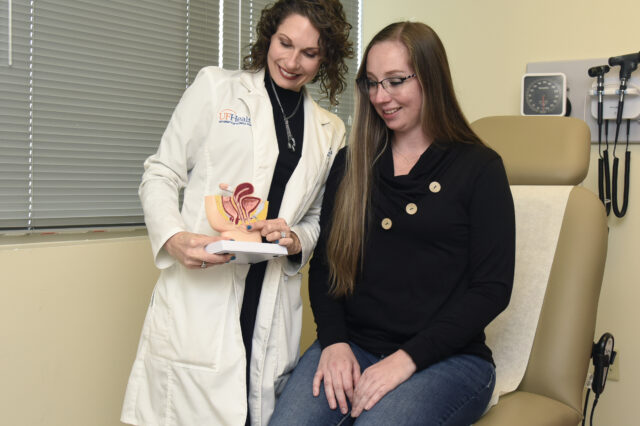Pelvic Floor Physical Therapy
Pelvic floor physical therapy is a specialty within physical therapy focused on the rehabilitation and strengthening of pelvic floor muscles, along with the other muscles of the core, to improve function.

What is pelvic floor physical therapy?
Pelvic floor physical therapy is a specialty within physical therapy focused on the rehabilitation and strengthening of pelvic floor muscles, along with the other muscles of the core, to improve function.
The pelvic floor includes the muscles, ligaments and connective tissues in the lower pelvis that supports your pelvic organs, including the bowel, bladder, uterus, vagina and rectum.
For men and women, pelvic floor muscles play an important role in bladder and bowel function. When your pelvic floor isn’t working properly, it can greatly affect your quality of life and may lead to symptoms of chronic pelvic pain, constipation, difficulty with urination or bowel movements, incontinence and painful sex.
Many individuals are affected by disorders of the pelvic floor. According to the National Institutes of Health, one in three women will experience a pelvic floor disorder sometime in their lifetime. Also, pelvic floor physical therapy isn’t only for women and it isn’t just about doing Kegel exercises. Anyone who is experiencing discomfort in the pelvic area, or any of the symptoms mentioned above, may benefit from seeing a physical therapist.
What to expect at your initial physical therapy session
The initial physical therapy appointment at UF Health Jacksonville involves getting to know you and understand your specific needs. You will discuss your history, the reasons that brought you in, your concerns, discomforts and daily struggles, and your goals for treatment.
Your physical therapist will also educate you on your condition, the various available treatment options, and how your specific treatment plan will proceed. The therapist will give you a generalized physical exam to assess your posture and mobility of your hips and spine.
For women, they will perform an internal vaginal examination of the pelvic floor muscles to help tailor an individualized program that will best fit your needs. For men, the pelvic floor muscles will be assessed through an anal examination.
Pelvic floor therapy sessions
Pelvic floor physical therapy is individualized based on your specific needs and concerns. It typically involves a hands-on combination of manual techniques, exercises, and movement coordination to help retrain your pelvic floor muscles.
You will also be given a program to work on at home, which may include treatments, such as:
- Biofeedback or visual ultrasound
- Breathing techniques
- Functional movement and postural coaching
- Kinesio taping to relieve pain and provide support to the pelvic floor muscles
- Myofascial release, using light pressure to the pelvic floor muscles
- Pain education
- Scar tissue mobilization
- Soft tissue massage
- Strengthening and flexibility exercises
- Visceral manipulation to improve the function and mobility of the pelvic floor muscles and surrounding structures
How many pelvic floor therapy sessions will you need?
The number of visits you need will vary based on your specific pelvic floor concerns, how long you’ve had these problems, your overall health, and consistency with your home program. Most individuals will need six to 12 sessions and will start to see improvement in a little as three to four sessions.
For more information about rehabilitation services at UF Health Jacksonville visit UFHealthJax.org/rehab.